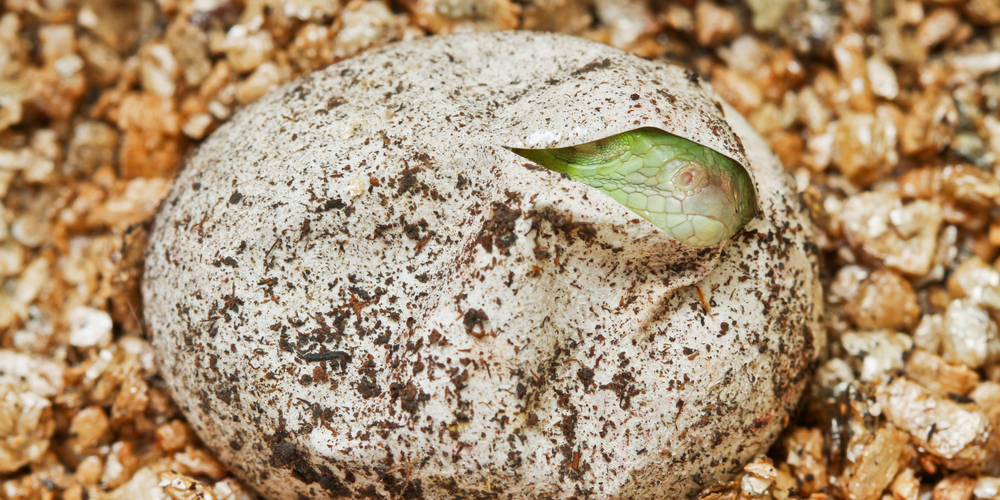Lizards lay eggs that are small and leathery. The eggs are often brightly colored and patterned. Some species of lizards will lay their eggs in nests, while others will just lay them on the ground. Lizard eggs in gardens are often buried to keep them safe and warm.
If you find lizard eggs in your garden, it’s important that you leave them alone. Don’t turn the eggs or move them, as this can damage the eggs. Instead, just let them be and watch from a distance to see if any baby lizards hatch. Once the eggs hatch, the baby lizards will be on their own and not need your help.
What happens if you move a lizard egg?

If you accidentally move or turn a lizard egg, the embryo inside can be damaged. This can kill the baby lizard before it even hatches. A sunny spot may seem ideal to a human, but it can be too hot for lizards’ eggs and can cause them to overheat. If you find lizard eggs, leave them alone and let nature take its course.
How to identify lizard eggs?
Lizard eggs are small and leathery, white-colored and tend to have pink veins when the babies are about to hatch. If you find eggs in your garden and aren’t sure if they’re lizard eggs, you can try to identify them by their size and appearance.
A lizard egg measures less than an inch. When the lizard egg is infertile, the center will be red or pink. If the lizard egg is fertile, the center will be white or yellow. During the mating season, male lizards will often fight over females. The male that wins the fight gets the chance to mate with the female. After mating, the female lizard will lay her eggs a few weeks later and then return to her normal activities.
The sex of the baby lizard is determined by either temperature or sex chromosomes. If the eggs are incubated at a high temperature, the baby lizards will be male. If the eggs are incubated at a low temperature, the baby lizards will be female.
Lizard eggs vary in size depending on the species of lizard. Some lizards lay very small eggs, while others can lay eggs up to 3 inches long. Small lizards like anoles or geckos can lay as many as 50 eggs at a time, while larger lizards like iguanas usually only lay around 10 eggs.
How often do lizards lay eggs?
Lizards lay eggs anywhere from 1-5 times per year. The number of times a lizard lays eggs in a year depends on the species and the lizard’s age and health. Some lizards only lay eggs once every few years.
When baby lizards hatch from their eggs, they look like tiny versions of their adult counterparts. They will have the same coloring and patterns, just on a smaller scale. Baby lizards are also born with fully functioning legs and tails, and they can fend for themselves immediately.
How Can You Tell The Difference Between A Lizard Egg And A Snake Egg?
Lizard eggs and snake eggs are both reptile eggs. They are both laid by animals that have scaly skin and breathe air. Lizard eggs and snake eggs are both laid on land. In truth,
it can be difficult to differentiate between a snake and lizard egg r, especially if they’re of the same size. However here are a few tips to tell lizard eggs apart from snake eggs:
- Lizard eggs are generally smaller and more round than snake eggs.
- Another way to tell the difference is that lizard eggs usually have a softer shell, while snake eggs have a much harder shell.
- Lizard eggs in gardens are usually laid in clusters, while snake eggs are generally laid individually.
How Can You Tell The Difference Between A Lizard Egg And A Birds Egg?
There are several ways to tell the difference between a lizard egg and a bird’s egg:
- Reptile eggs are usually soft, leathery to the touch; bird eggs, on the other hand, have a hard shell that is not as flexible.
- Lizard eggs are often brightly colored and patterned, while bird eggs are usually a more dull color.
- Lizard eggs are usually smaller than bird eggs (measuring the size of a fingernail)
- Lizard eggs are usually laid in clusters, while bird eggs are generally laid individually.
- When it’s close to hatching time, you may be able to see the baby lizard inside the egg. That is not possible with bird eggs, as they have a hard shell.
Related Article: Can Blue Tonged Skink Eat Earthworms?
